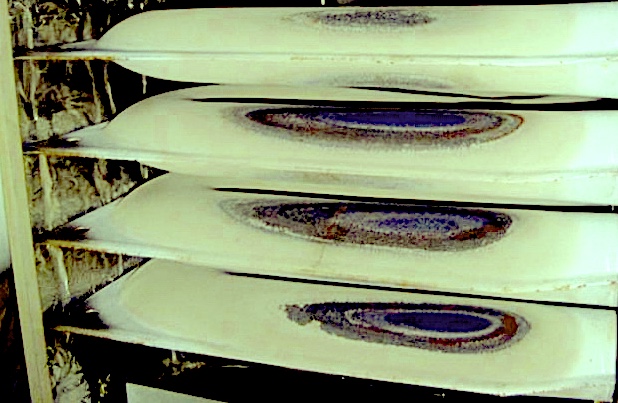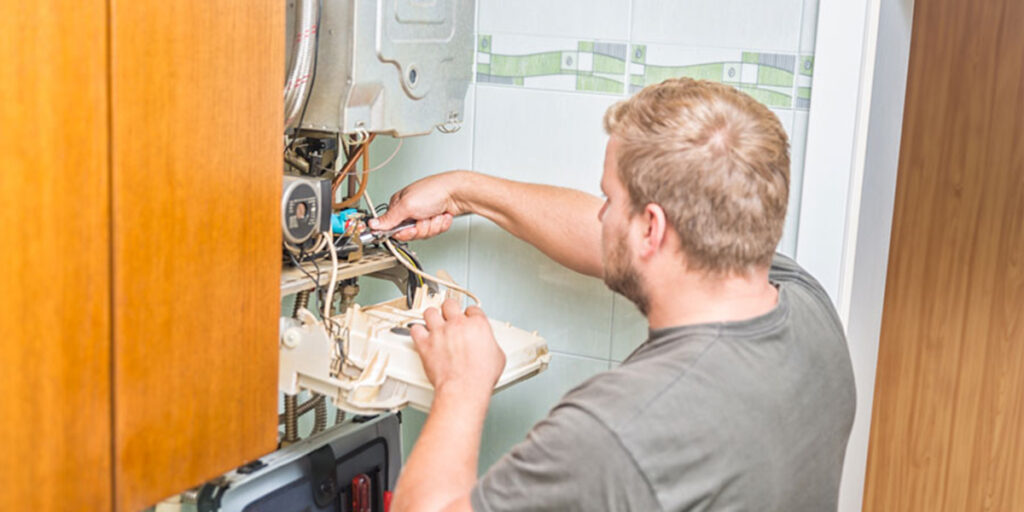Your furnace works hard to keep your home warm and cozy during the chilly months. But there’s a hidden danger that could be lurking in your home without you even knowing it: carbon monoxide.
This silent killer is tasteless, odorless, and can be incredibly harmful to you and your family. It’s crucial to know the signs that your furnace might be leaking this dangerous gas. Imagine the peace of mind you’ll have, knowing your family is safe and your home is secure.
By the end of this article, you’ll be equipped with the knowledge to identify potential leaks and take action before it’s too late. Let’s dive into the simple steps you can take to ensure your home remains a safe haven. Don’t wait until it’s too late; your family’s safety is in your hands. Read on to discover how to protect what matters most.

Credit: carbonmonoxide.com
Signs Of Carbon Monoxide Leakage
Carbon monoxide (CO) is a silent threat. It’s colorless and odorless. A furnace leak can go unnoticed. Recognizing the signs is vital. Early detection prevents serious health risks. Let’s explore the signs of a CO leak.
Physical Symptoms In Humans
CO exposure affects health quickly. Headaches are common. Dizziness often follows. Nausea and vomiting can occur. Some people feel confused. Symptoms mimic the flu but without a fever. If symptoms lessen outside, CO could be the cause.
Unusual Furnace Behavior
Your furnace might act strangely. A yellow pilot light can signal a problem. Normal flames are blue. Soot around the furnace indicates incomplete combustion. Frequent pilot light blowouts are concerning. Listen for strange noises. Rumbling or banging sounds need attention.
Detecting Odors And Sounds
CO itself is odorless. But other smells can hint at issues. A gas odor near the furnace is serious. Listen for unusual sounds. Whistling or hissing noises suggest leaks. A detector alarm is the best alert. Install and maintain one for safety.

Credit: www.facebook.com
Safety Measures And Precautions
Detecting carbon monoxide leaks in furnaces is crucial for safety. Strange odors or soot around the furnace may indicate a leak. Regular inspections and carbon monoxide detectors help ensure a secure environment.
Ensuring your home is safe from carbon monoxide leaks is essential. This invisible gas can be deadly. Understanding safety measures can save lives. Learn these simple precautions.Proper Ventilation
Good ventilation prevents carbon monoxide build-up. Keep air flowing in your home. Open windows regularly for fresh air. Ensure vents are clear of obstructions. Check that all exhaust outlets are functioning. Proper airflow keeps your home safe.Regular Furnace Maintenance
Regular furnace maintenance is crucial. Schedule annual checks by professionals. They can spot potential issues early. Change filters regularly for clean air. Inspect the furnace for cracks or leaks. A well-maintained furnace reduces risks.Installing Carbon Monoxide Detectors
Carbon monoxide detectors are vital. Install them on each floor of your home. Place detectors near sleeping areas. Test them monthly to ensure they work. Replace batteries twice a year. Detectors alert you to danger early.Professional Inspection And Testing
When it comes to ensuring your home’s safety, having a professional inspect and test your furnace is crucial. Carbon monoxide leaks are silent and can be deadly, so understanding the importance of professional inspection can save lives. Trusting a certified technician to examine your furnace can provide peace of mind and ensure that everything is running safely and efficiently.
Hiring A Certified Technician
Finding the right professional is your first step. Look for technicians who are certified and experienced in handling furnaces. Ask for recommendations from friends and family or read online reviews to gauge their reliability.
When you hire a certified technician, you’re not just getting someone to look at your furnace. You’re getting someone who knows the ins and outs of furnace systems. They can identify potential issues that you might not even be aware of.
Make sure to ask questions. Inquire about their experience with carbon monoxide detection and what measures they take to ensure safety. This conversation can provide valuable insights into their expertise.
Testing Equipment And Tools
Certified technicians come equipped with specialized tools. These tools can detect carbon monoxide levels that are invisible to the naked eye. Understanding the equipment they use can help you appreciate the thoroughness of their work.
Technicians use devices like carbon monoxide detectors and combustion analyzers. These tools measure the concentration of carbon monoxide in your home, ensuring it is within safe limits.
Have you ever wondered why DIY testing might not be enough? The reason is simple: professional tools are calibrated and more sensitive, providing accurate results that home kits often miss.
Interpreting Test Results
Once the testing is complete, understanding the results is key. A professional will explain what the numbers mean for your specific situation. They can tell you whether your furnace is operating safely or if repairs are needed.
Listen carefully to the technician’s explanation. They will often provide actionable steps if any issues are found. This might include immediate repairs or planning for future maintenance.
Think about the last time you received a medical report. You trust the doctor to interpret the results and suggest a course of action. Similarly, trust your technician to guide you toward a safer home environment.
Regular inspections and proper maintenance can prevent carbon monoxide leaks. By hiring a certified technician, understanding their tools, and learning from the results, you’re taking proactive steps to protect your loved ones. What measures will you take today to ensure your home’s safety?
Immediate Steps If Leakage Is Suspected
Discovering a potential carbon monoxide leak in your furnace can be alarming, but knowing the immediate steps to take can make all the difference. Your quick actions can protect your loved ones and prevent harm. Are you ready to act swiftly if you suspect a leak?
Evacuation Procedures
First and foremost, evacuate everyone from the house. Ensure no one lingers inside. Fresh air is your best ally. Open windows and doors as you leave. This simple move can dilute any carbon monoxide present.
Think about your family pet too. Make sure they are out of harm’s way. If you have a multi-story home, start from the top floor. Gravity can help carbon monoxide descend.
Contacting Emergency Services
Once you’re outside, call emergency services. Inform them about the suspected leak. They are trained to handle such situations.
A quick call can provide vital assistance. They might advise you on further steps while on the way. This is not the time to hesitate or second-guess.
Temporary Heating Alternatives
It’s crucial to stay warm, especially during colder months. Consider using electric heaters as a temporary solution. They can provide warmth without the risk of carbon monoxide.
Gather blankets and wear layers. This will help conserve body heat. Planning ahead for such situations ensures you’re prepared.
When faced with a potential hazard like a carbon monoxide leak, your immediate actions can safeguard your family’s well-being. Have you ever had a close call that made you realize the importance of quick thinking?
Preventive Strategies For Homeowners
Homeowners must take action to prevent carbon monoxide leaks. Implementing preventive strategies can save lives and ensure peace of mind. Knowing how to maintain and upgrade your furnace is crucial. Educating everyone in the household is equally important. Let’s dive into some effective methods.
Routine Furnace Checks
Regular furnace checks help detect issues early. Schedule inspections annually. A professional can spot problems you might miss. Check the pilot light for a blue flame. A yellow flame could indicate carbon monoxide. Ensure vents are clear and unobstructed. Blocked vents can lead to dangerous gas buildup.
Energy Efficiency Upgrades
Upgrading to an energy-efficient furnace reduces risks. Newer models often have safety features. These features can detect leaks early. Energy-efficient systems also lower utility bills. Consider installing a carbon monoxide detector. Place it near sleeping areas for added safety.
Educating Family Members
Educate your family about carbon monoxide dangers. Teach them to recognize symptoms like dizziness. Ensure they know the sound of detectors. Develop an evacuation plan for emergencies. Practice it regularly to ensure everyone knows the steps. Knowledge keeps everyone safe.

Credit: toplineair.com
Frequently Asked Questions
How Can I Detect Carbon Monoxide From My Furnace?
Install a carbon monoxide detector near your furnace. It alerts you to any dangerous levels.
What Are Signs Of A Carbon Monoxide Leak In My Furnace?
Look for dizziness, headaches, or nausea. Also, a yellow burner flame may indicate a problem.
Is A Carbon Monoxide Leak From A Furnace Common?
It is uncommon but possible. Regular maintenance reduces the risk significantly.
Can I Prevent Carbon Monoxide Leaks In My Furnace?
Yes, ensure annual inspections and maintain good ventilation to prevent leaks.
Why Is My Furnace Leaking Carbon Monoxide?
Possible reasons include a cracked heat exchanger or poor ventilation. Have a professional inspect it.
Conclusion
Detecting carbon monoxide leaks early is vital for safety. Be alert to unusual furnace odors. Install a carbon monoxide detector for extra protection. Regular furnace maintenance can prevent leaks. Keep your family safe with these simple steps. Stay informed and proactive.
Your home’s safety depends on it. Always prioritize health and peace of mind. Don’t ignore potential signs. Take action promptly to ensure a secure environment. Remember, prevention is better than cure. Maintain awareness and stay safe. Your efforts can make all the difference.




